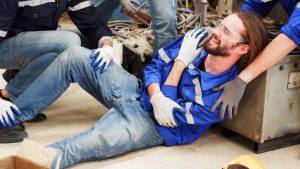Nurses are in high demand in today’s world. The American Hospital Association (AHA), reported that the United States is almost 120,000 nurses short of what is required to meet the nation’s current health care needs. This mean nurses are often required to do more than what would typically be required.
It is reported that health care workers have a higher likelihood of sustaining a back injury than that of construction, mining, and manufacturing workers. This can be associated to lifting, transferring and pushing patients. Often times, patients are in awkward positions which cause a higher percent chance of injury.
The Department of Health and Human Services reports that the “direct and indirect costs associated with back injuries in the health care industry are estimated to be $20 billion annually. Additionally, nursing aides and orderlies suffer the highest prevalence (18.8%) and report the most annual cases (269,000) of work-related back pain is among the highest of female workers in the United States. In 2000, 10,983 registered nurses (RNs) suffered lost-time work injuries due to lifting patients. Twelve percent of those nurses report that they left the nursing profession because of back pain.”
To prevent back injuries it is important to utilize proper lifting mechanics. Revitals.com recommends that nurses “take full advantage of ANY and ALL mechanisms and lifting devices the hospital has at your disposal, accurately assess in advance exactly what is needed to move the patient, pair up with and solicit help from a fellow RN, and exercise with weights on an uneven surface to encourage your body to adapt and adjust to changes to prevent injuries.”
If you sustain a work related injury it is important to report your injury immediately to your employer. Depending on whether your claim is accepted or denied and the severity of your injury you may want to consider consulting with an attorney.




